
Sustainable Water Management in Cities: Engaging stakeholders for effective change and action. 13-17 December 2010. Zaragoza, Spain
Field visits | The Water Tour
Optional technical visit organized by the Zaragoza City Council on Monday 13 December 2010 from 09.30.
9.30 Participants picked up at their hotels
10.00 Welcome by the Water Cycle councilor, Ms. Lola Campos, at the Casablanca Water Treatment Plant
10.10 Presentation: Action Policy of the Water Cycle Municipal Board.
Presentation: Landscape interventions in the Ebro River in Expo2008: Mr. Francisco Pellicer, Deputy Manager of Operations Department of Expo2008
11.00 Visit to the Treatment Plant
11.30 Visit to Expo site and Ebro Riverside
12.30 Guided visit to Wastewater Treatment Plant
14.00 Snack lunch
15.30 Return to hotels
Landscape interventions in the Ebro River
 View of the city of Zaragoza (Juan Bautista Martínez del Mazo, 1647)
View of the city of Zaragoza (Juan Bautista Martínez del Mazo, 1647)Landscape interventions in the Ebro River are based on the idealistic view of people enjoying the landscape and the river.
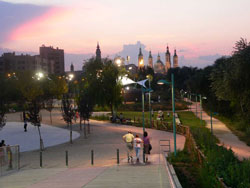 Lighting of the riverside
Lighting of the riversideLighting of the riverside allows people to enjoy the Ebro river walkway longer, especially during summertime.
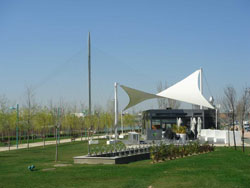 Leisure spaces
Leisure spacesLeisure spaces motivate people to engage in recreational activities next to the riverside.
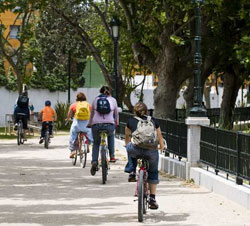 Bicycle way
Bicycle wayBicycle ways have improved urban mobility within the city.
Casablanca Water Treatment Plant
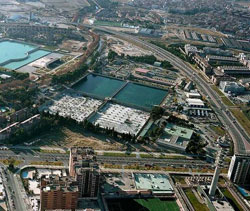 Casablanca's water storage facilities
Casablanca's water storage facilitiesImprovements of the city's water storage facilities, which are 90 years old, have reduced water losses in 4 million cubic meters per year. This has been the most rewarding contribution to the Water Quality and Water Supply System Management Plan of Zaragoza.
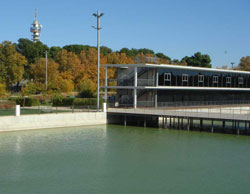 New water storage facilities
New water storage facilitiesNew water storage facilities have been built near the water purification plant to receive water from the Pyrenees. With this, water salinity has been reduced by 68% and its treatment generates 65% less trihalomethanes.
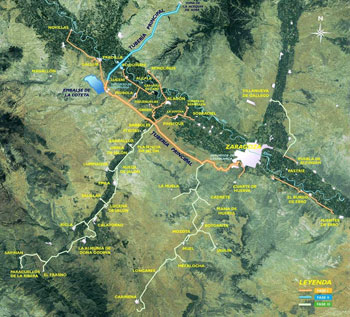 Water pipes bringing water from the Pyrenees
Water pipes bringing water from the PyreneesWater pipes bringing water from the Pyrenees allow that 70% of the population of Aragon benefit of good drinking-water quality. This has also allowed reducing significantly the amount of chemical products needed for water purification.
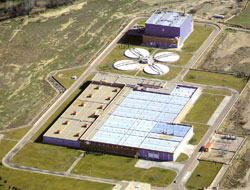 Wastewater Treatment Plant of La Cartuja
Wastewater Treatment Plant of La CartujaThe Wastewater Treatment Plant of La Cartuja has a treatment capacity of 4.5 cubic meters per second and has been built with the environment in mind in order to minimize its impact. The plant also applies tertiary treatment for the elimination of phosphorous.






 Twitter
Twitter  Facebook
Facebook  Wordpress
Wordpress  YouTube
YouTube